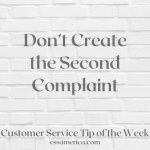
In the recent Bloomberg article “Some banks are giving tellers more to do and better pay,” a Goldman Sachs survey is highlighted. It notes how more and more people are going to digital means to find answers to questions through self-service, and then they go to tellers or a branch if they can’t find the answer. Essentially, the article talks about how so many of the more common questions and inquiries are addressed without ever going to a human being.
So, what does this mean for the frontline staff?
Employees Deal with More Complexity
It means that when staff get questions, those questions are typically more complex. Therefore, they need to be well-versed in higher-level issues and challenges and with software applications that might not have anything to do with their own business. Maybe it’s a Venmo request, but they’re calling a bank that has nothing directly to do with Venmo. Maybe it’s a PayPal question, but their bank has no formal relationship with PayPal.
Customers Already Invested Time
Another consideration is that, if the customer didn’t find the answer to their question via the self-service methods, then they’ve already gone through a process and spent time on an issue before they ever get to a person. Therefore, they have already invested time and energy, and their patience may be waning. There may be more of a sense of urgency in their request.
Customers are Frustrated with the Lack of Results
Third, since they attempted to do this on their own and they could not, they might have a greater likelihood of being frustrated when the conversation starts. They’ve already made the attempt and not found the answer. So these frontline employees are being asked higher-level questions about other sources of information or other services that might not relate directly to their company. They are dealing with customers who have already invested time and energy, dealing with customers who may be frustrated with the lack of results from that expenditure of time and energy.
When you’re on the phone with the caller today as opposed to even 10 years ago, make sure you’re aware of those other features and functions and sources of information that your customer may go to first. Make sure you know the higher-level answers and have the patience to deal with folks who might have a sense of urgency because they’ve already spent time looking elsewhere. And make sure you understand that people might be upset with something that has nothing to do with you – maybe it’s a lack of an answer from another source – but now they’re not only coming to you with a higher-level need, they’re coming to you with a little bit of frustration as well.
In this digital world, have a sense for what the customer has gone through as a part of even getting you on the phone, because oftentimes you’re not the first source; yet, you’re dealing with a customer and the emotional baggage that their encounter with that first source left behind.
Bank on Higher Level Service.
Signup for FREE Tips! Contact Us More Resources for You Visit Our Home Page
























